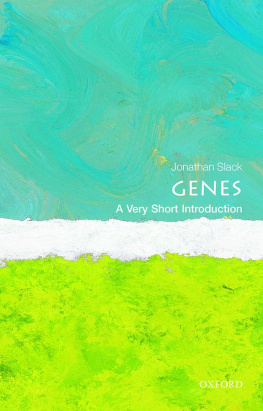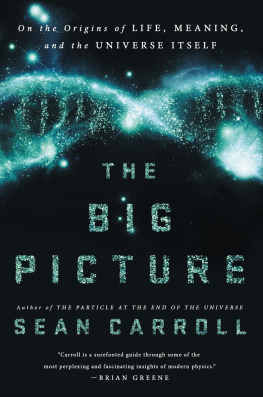Acknowledgments
When I was twelve or thirteen, an uncle of minelets call him Uncle Dickasked me what I wanted to be when I grew up. A biologist! I blurted out. Uncle Dick furrowed his exceptionally long forehead and grimaced, But there is no money in that.
Fortunately, my parents were not bothered by such practical concerns and encouraged each of their four children to pursue whatever interested usand so we did. I have since learned that many happy people received the same parental advice that I heard. So, thanks Mom and Dad for allowing me to keep snakes, newts, salamanders, and lizards in the house, and their various squirmy and disgusting food items in the refrigerator.
The burden of putting up with my peculiar interests now falls upon my own family; without their support, encouragement, love, and sense of humor this project would be impossible and pointless. My wife, Jamie, has done far more than tolerate a distracted husbandshe designed and selected key artwork for the book and worked hard to make the prose readable. My sons, Will and Patrick, have accompanied (or led) me to several of the magical places mentioned here, such as Yellowstone National Park and Fossil Butte National Monument. The shouting match of my stepson, Chris, with howler monkeys on our visit to Costa Rica inspired the story in chapter 6.
I also thank my siblings, who have always supported me in every endeavor. My brothers, Peter and Jim, helped shape a couple of chapters and my sister, Nancy, has continued our decade-long running discussion of the history and insights of evolutionary biologys pioneers.
I am very grateful for the generous creative and critical contributions of colleagues at the University of WisconsinMadison. Leanne Olds composed or adapted most of the schematic figures; Professor James F. Crow, Drs. Antonis Rokas, Benjamin Prudhomme, and Steve Paddock, and Chris Hittinger read the entire manuscript and provided detailed critiques and suggestions.
The discoveries described in the book are the fruits of the creativity and hard work of thousands of scientists who have contributed to the invention of the methods used to decipher the DNA record and who have analyzed many species genes and genomes. I thank the many scientists who provided illustrations of their work and shared their expertise and ideas. I especially want to thank Michael Nachman, Michael Lynch, Cliff Tabin, and Eugene Koonin for detailed discussions and information.
I am also particularly indebted to the individuals who have worked with and collaborated with me over the past two decades. I have continued to learn more from my postdocs and students than I teach in return. The dedication and efforts of my longtime staff have made our research laboratory an exciting and fun place to be every day. And my close colleagues around the world have been an endless source of inspiraton and enlightenment. I have enjoyed an unusual degree of freedom in pursuing research ideas thanks to the generous support of the Howard Hughes Medical Institute.
I am especially grateful to my agent, Russ Galen, who provided crucial guidance at the conception of this book as well as great encouragement throughout its development, and to my editor, Jack Repcheck, for his infinite enthusiasm, critical input, and confidence in the importance of this book.
A LSO BY S EAN B. C ARROLL
Sources and Further Reading
The discoveries and ideas I have described are the accomplishments of a very large number of biologists. Because this book is intended for a broad audience, I chose not to name every individual or laboratory associated with each specific discovery, nor to use footnotes in the text; instead, I provide two sets of sources and references in this section. First, I offer some suggestions for books on evolution for further reading. And second, I detail a chapter-by-chapter summary of the original references upon which I relied. In most cases, the titles of scientific journal articles are omitted because the citation includes enough information for interested readers to locate them. Abstracts of most biological research papers can be accessed via a free government-sponsored database called PubMed at http://www.ncbi.nlm.nih.gov/entrez/query.fcgi.
General Books on Evolution
Of the many excellent books on evolution, the following may be of particular interest to readers of this book.
Carroll, Sean. Endless Forms Most Beautiful: The New Science of Evo Devo and the Making of the Animal Kingdom. New York: W. W. Norton, 2005.
Conway Morris, Simon. Lifes Solution: Inevitable Humans in a Lonely Universe. Cambridge: Cambridge University Press, 2003.
Dawkins, Richard. The Ancestors Tale: A Pilgrimage to the Dawn of Evolution. New York: Houghton Mifflin, 2004.
. The Blind Watchmaker: Why the Evidence of Evolution Reveals a Universe Without Design. New York: W. W. Norton, 1986.
. Climbing Mount Improbable. New York: W. W. Norton, 1996.
Desmond, Adrian, and James Moore. Darwin: The Life of a Tormented Evolutionist. London: Michael Joseph, 1991.
Knoll, Andrew. Life on a Young Planet : The First Three Billion Years of Evolution on Earth. Princeton, N.J: Princeton University Press, 2003.
Palumbi, Stephen. The Evolution Explosion: How Humans Cause Rapid Evolutionary Change. New York: W. W. Norton, 2001.
Ridley, Matt. The Red Queen: Sex and the Evolution of Human Nature. London: Penguin, 1993.
Weiner, Jonathan. The Beak of the Finch: A Story of Evolution in Our Time. New York: Alfred A. Knopf, 1994.
Zimmer, Carl. Evolution: The Triumph of an Idea . New York, HarperCollins, 2001.
Preface. Beyond Any Reasonable Doubt
The exoneration of Kevin Lee Green is mentioned in the report What Every Law Enforcement Officer Should Know About DNA Evidence (National Institute of Justice, National Commission on the Future of DNA Evidence, 1999) and in the case histories of the Innocence Project (www.innocenceproject.org). The increased use of DNA matching to solve cold cases is described in the National Forensic DNA Study Report (Smith Alling Lane, P.S., and Washington State University, 2003).
The rapid growth in the volume of DNA sequences in public databases is tracked at GenBank (www.ncbi.nih.gov/genbank/genbankstats.html).
1. Introduction: The Bloodless Fish of Bouvet Island
The voyage and work undertaken by Ditlef Rustad on the S.S. Norvegia , and his photographs, are documented in O. Holtedahl, ed., Scientific Results of the Norwegian Antarctic Expeditions, 19271928 (Oslo: I Kommisjon Hos Jacob Dybwad, 1935).
Johan Ruud described his journeys to the Antarctic in Scientific American 213 (1965): 10815. His original paper on the absence of red blood cells in the icefish is in Nature 173 (1954): 84850.
Descriptions of the globin genes of icefish are reported in G. di Prisco et al., Gene 295 (2002): 18591; E. Cocca et al., Proceedings of the National Academy of Sciences, USA 92 (1995): 181723; and Y. Zhao et al., Journal of Biological Chemistry 273 (1998): 1474552. A general review of icefish biology and genetics is B. D. Sidell, Gravitational and Space Biology Bulletin 13 (2000): 2534. The functional evolution of icefish microtubules is reported in H. W. Detrich et al., Journal of Biological Chemistry 275 (2000): 3703847. The origin of icefish antifreeze is reported in L. Chen, A. L. DeVries, and C.-H. C. Cheng, Proceedings of the National Academy of Sciences, USA 94 (1997): 381116, and the fate of icefish myoglobin is detailed in B. D. Sidell et al., Proceedings of the National Academy of Sciences, USA 94 (1997): 342024; T. J. Moylan and B. D. Sidell, The Journal of Experimental Biology 203 (2000): 127786; and D. J. Small et al., The Journal of Experimental Biology 206 (2003): 13139.
















